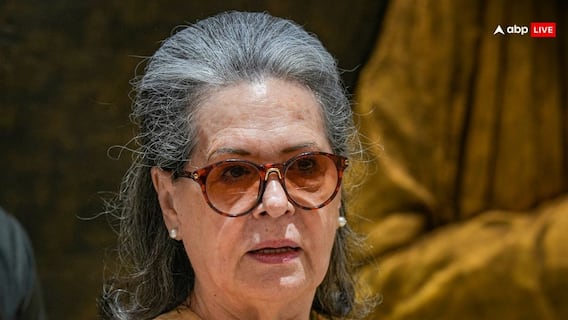16-Yr-Old Iranian Girl Dies After Mysterious Injury On Tehran Metro While Not Wearing Hijab
Armita Geravand,a 16-year-old Iranian girl, fell into a coma earlier this month after an alleged confrontation with officers enforcing the mandatory Islamic dress code, a charge denied by Iran

Armita Geravand, an Iranian teenage girl who sustained injuries in a mysterious incident on Tehran's Metro while not wearing a headscarf, has passed away, Iranian state media IRNA reported. The incident, which transpired on October 1, raises concerns and may revive popular protests related to the mandatory headscarf law in Iran. Geravand had remained in a coma for weeks following the injury. Her passing comes shortly after the one-year anniversary of the death of 22-year-old Mahsa Amini, whose death had sparked nationwide protests at the time.
The circumstances surrounding Armita Geravand's injury have remained uncertain. A friend of hers suggested to Iranian state television that she may have hit her head on the station's platform, news agency AP reported. However, the footage aired by the broadcaster from outside the train is obscured by a bystander, making it challenging to determine what exactly transpired in those crucial moments, AP's report mentioned. Shortly thereafter, Geravand's lifeless body was removed from the scene.
Geravand, a 16-year-old Iranian girl, fell into a coma earlier this month after an alleged confrontation with officers enforcing the mandatory Islamic dress code, news agency Reuters reporters citing Iranian state media. However, Iran denied that she was injured after a confrontation on October 1 with officers, as per Reuters.
Notably, the Iranian state TV report did not include any footage from inside the train and no explanation was offered for the omission. The Tehran Metro typically has multiple CCTV cameras inside its train cars, which are monitored by security personnel, the report stated.
Geravand's parents, as seen in state media footage, mentioned the possibility of a blood pressure issue, a fall, or a combination of factors contributing to their daughter's injury, according to AP.
Activists abroad have suggested that Geravand might have been pushed or attacked for not wearing the hijab. They have called for an independent investigation by the United Nations fact-finding mission on Iran, citing the Iranian government's pressure on victims' families and state TV's history of broadcasting coerced confessions, the report stated.
The exact circumstances surrounding Armita Geravand's injuries remain unconfirmed.
The Hengaw Organization for Human Rights, which monitors abuses in Iran's western Kurdish region and previously released a photograph of Geravand while she was in a coma, reiterated its call on Saturday for an independent international investigation, accusing the Iranian government of concealing the truth.
The location of Geravand's injury was the Meydan-E Shohada, or Martyrs' Square, Metro station in southern Tehran. Various rumors regarding the incident have circulated, though the IRNA report on her death did not mention them.
According to the IRNA report, "Unfortunately, the brain damage to the victim caused her to spend some time in a coma, and she died a few minutes ago. According to the official theory of Armita Geravand’s doctors, after a sudden drop in blood pressure, she suffered a fall, a brain injury, followed by continuous convulsions, decreased cerebral oxygenation, and a cerebral edema."
Geravand's injury occurred at a time when Iran had redeployed its morality police, who had faced allegations of involvement in Mahsa Amini's death. Simultaneously, lawmakers were pushing for stricter penalties for those not adhering to the mandatory head covering. Internationally, Geravand's injury led to renewed criticism of Iran's treatment of women and the obligatory hijab law.
Mahsa Amini Death And Subsequent Protests In Iran
Mahsa Amini passed away in a hospital on September 16, 2022, after being detained by Iranian morality police on allegations of improperly wearing the hijab. Suspicions of physical abuse during her arrest triggered mass protests, representing a significant challenge to Iran's theocratic government.
Although large-scale protests have subsided since then, many women in Tehran have continued to appear without the hijab in defiance of the law, AP reported.
In the midst of these developments, Iranian activist Narges Mohammadi was awarded the Nobel Peace Prize earlier this month for her relentless advocacy for women's rights, democracy, and against the death penalty. The Iranian government criticised the award as a political stunt, overlooking their decades-long campaign against Mohammadi for her work.
Iran remains under pressure due to sanctions and escalating tensions with the West over its advancing nuclear program and support for regional militant groups. This includes a renewed focus on its relationship with Hamas following the group's recent conflict with Israel.
For devout Muslim women, the headscarf is a symbol of piety and modesty. In Iran, the hijab, including the all-encompassing black chador worn by some, has also been a political symbol, especially after becoming mandatory in the years following the 1979 Islamic Revolution.
Iran and Taliban-ruled Afghanistan are the only countries where the hijab remains compulsory for women.
Trending News
Top Headlines





































